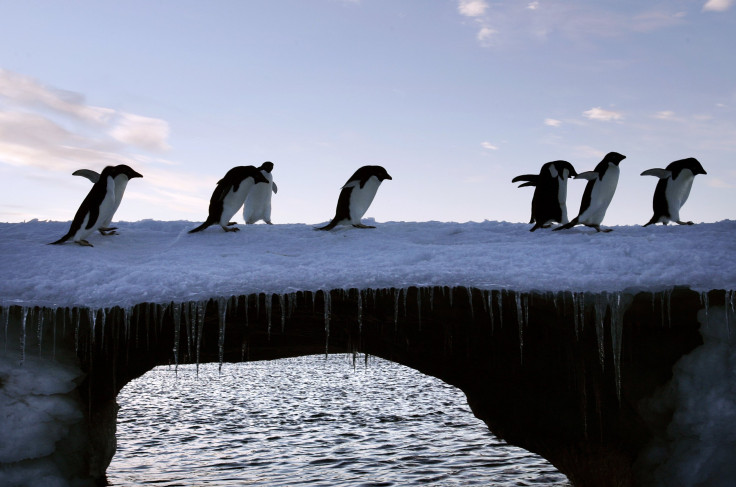Penguin population suffers big blow due to climate change

A new report has warned about the deadly impacts on climate change on Antarctica’s penguin population. Number of the birds is plummeting steadily especially in those areas where global warming’s impact is the most widespread. Experts believe that climate change will further devastate the penguins and their population may go down by up to 60 percent by the end of this century.
Colonies of Adélie penguins that exist only in Antarctica may be reduced by nearly two-thirds by the end of the century. The most-likely cause for the drastic decrease in populations would be warming of sea water that proves to be a hindrance for the penguins to rear chicks. While the penguins cannot thrive in too cold temperatures, excessive warmth is also harmful for the species.
The Adélie penguin population is declining rapidly in the West Antarctic Peninsula (WAP). The region is one of the most rapidly warming regions on Earth. According to lead author of the study Dr. Megan Cimino, the WAP has experienced warmer than normal sea surface temperatures, known as “novel climate,” in most years. Hence, the penguin population has declined by nearly 80 percent, writes The Independent.
The bad news is that climate models have predicted that the WAP won’t get respite from rising temperatures and will continue to experience the greatest frequency of novel climate this century. The study has been published in the journal Nature Scientific Reports.
“It is only in recent decades that we know Adélie penguins population declines are associated with warming, which suggests that many regions of Antarctica have warmed too much and that further warming is no longer positive for the species ... These two things seem to be happening in the WAP at a higher rate than in other areas during the same time period,” Cimino said in a University of Delaware statement.
The researchers relied on global climate model projections and a diverse range of satellite data for their study. They concluded that 30 per cent of current Adélie colonies in Antarctica could be gone by 2060 and by 2099 the number could go as high as 60 percent.
However, the scientists noticed a positive occurrence during their study. They saw that the regions where climate change is less rapid, like Cape Adare in East Antarctic, the Adélie population are steady and even increasing in certain areas. The findings led the experts to believe that the penguin population will be more concentrated in the south over the coming 100 years.
“The Cape Adare region of the Ross Sea is home to the earliest known penguin occupation and has the largest known Adélie penguin rookery in the world. Though the climate there is expected to warm a bit, it looks like it could be a refugium in the future, and if you look back over geologic time it was likely one in the past,” Cimino added.






